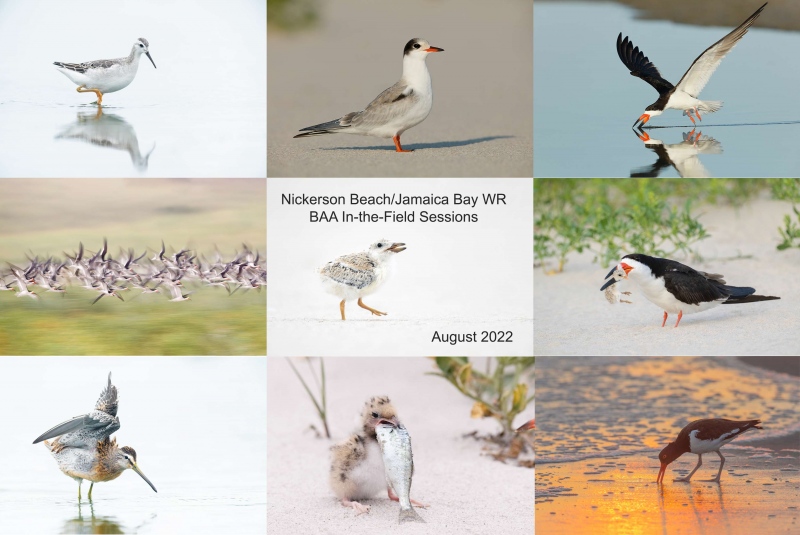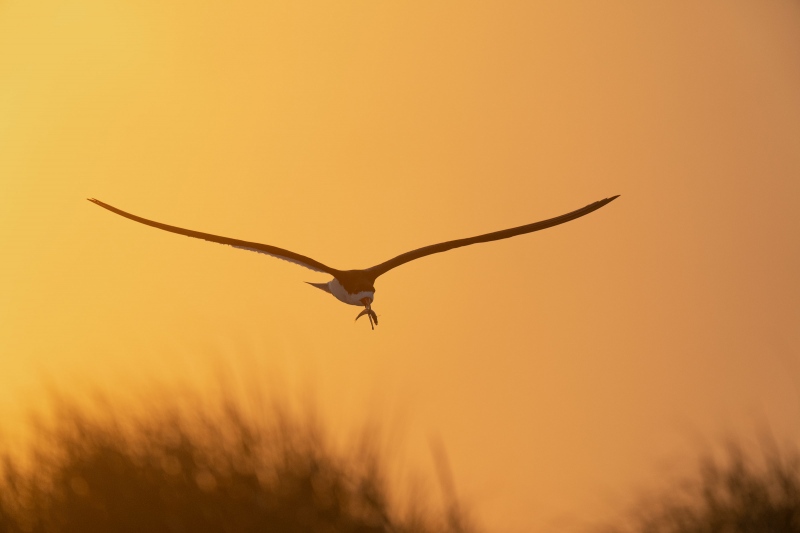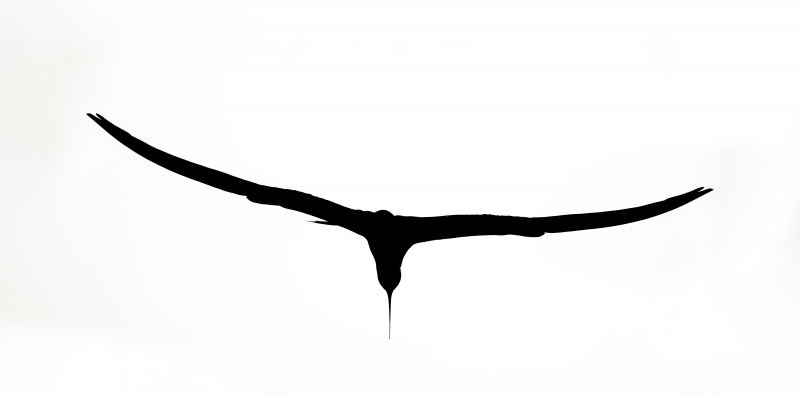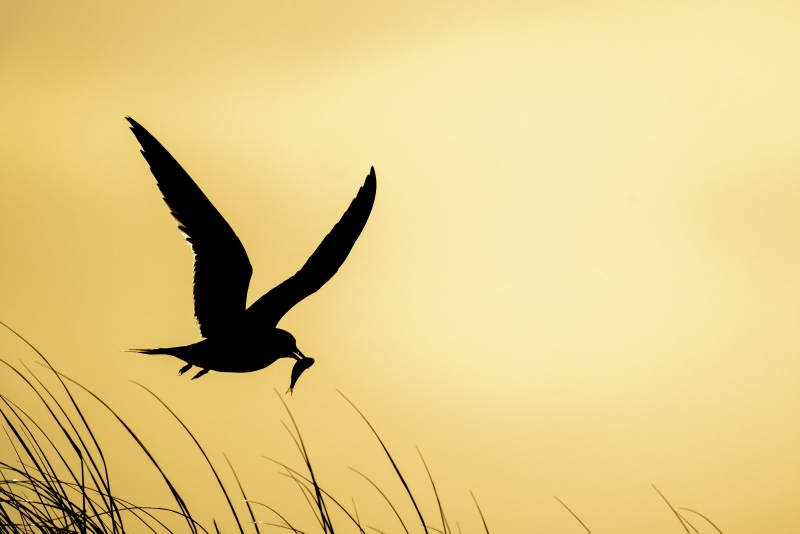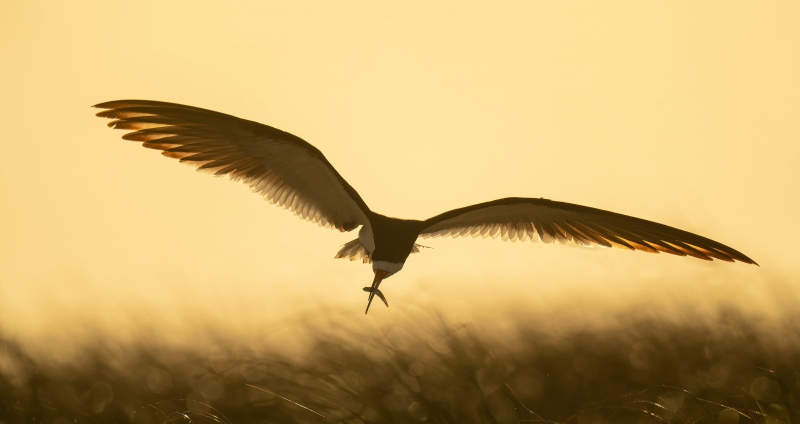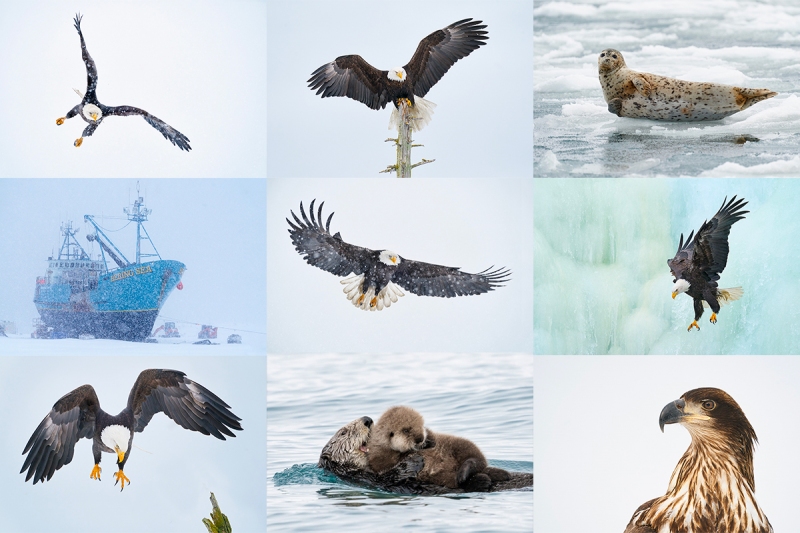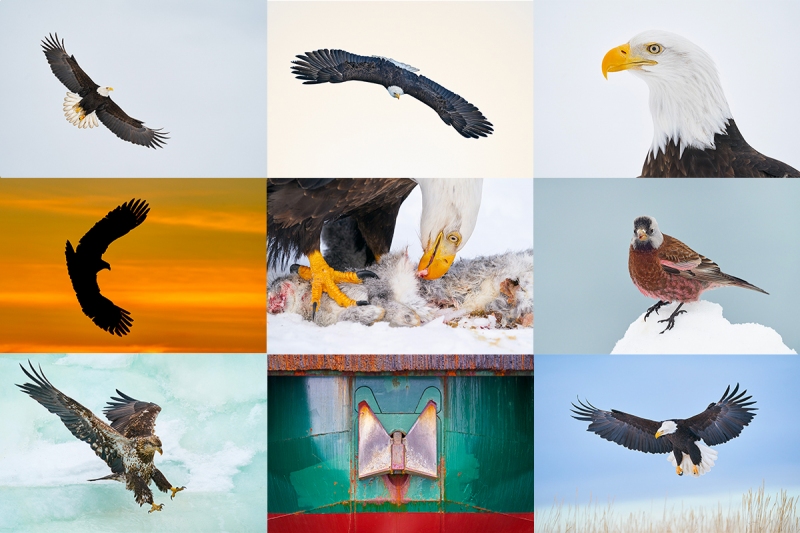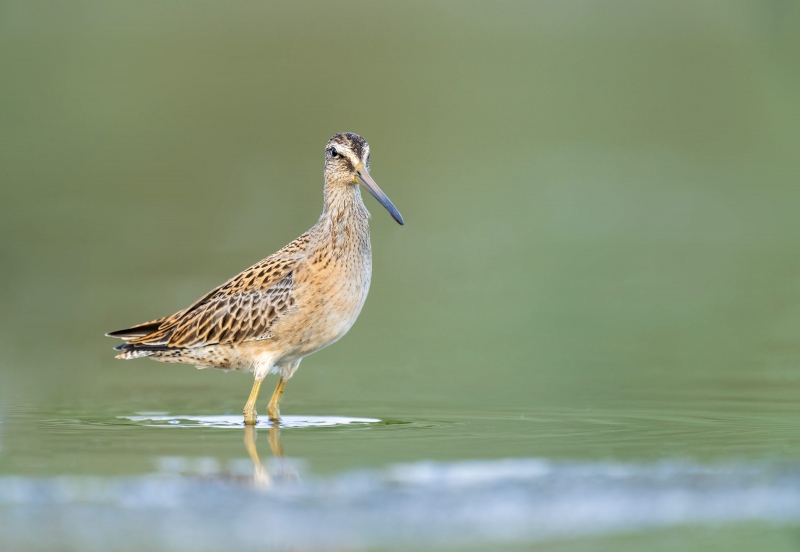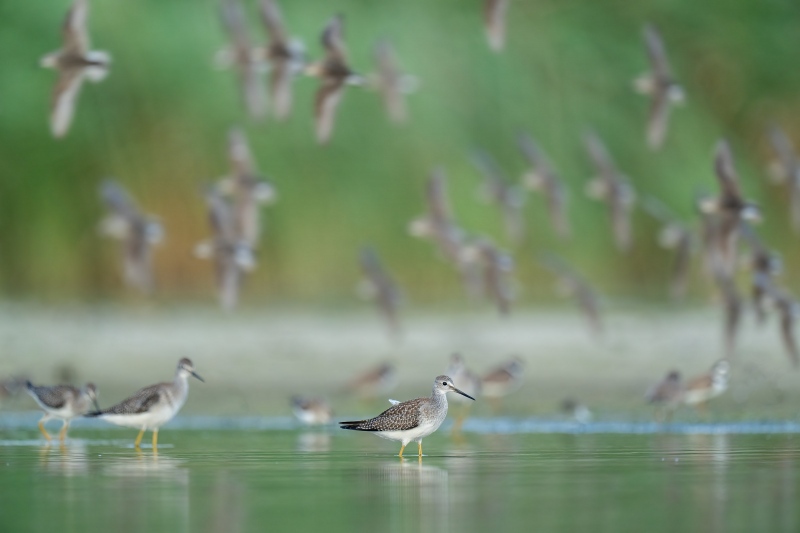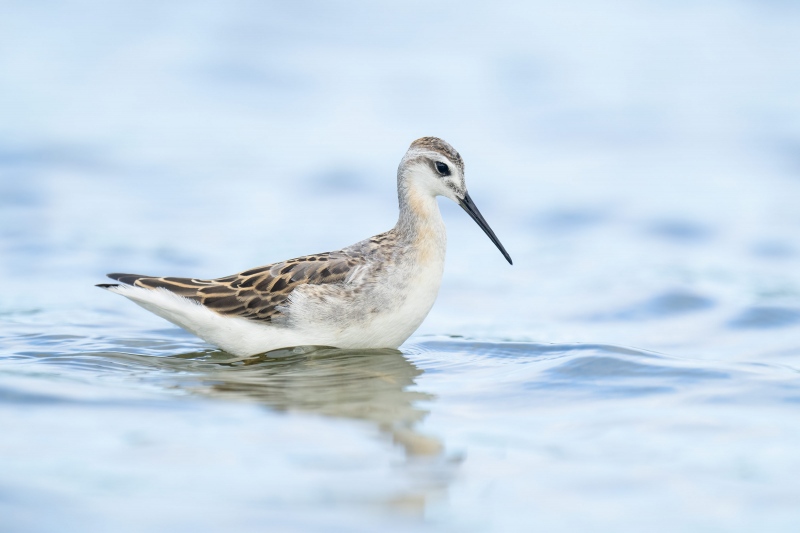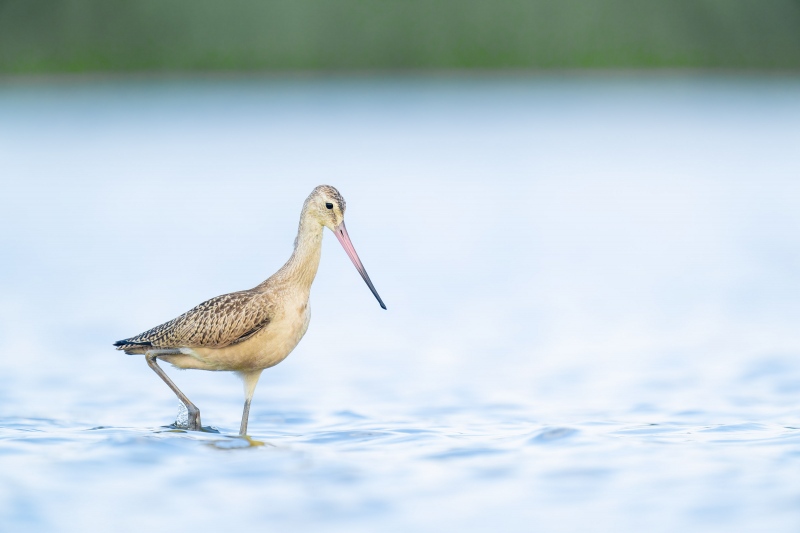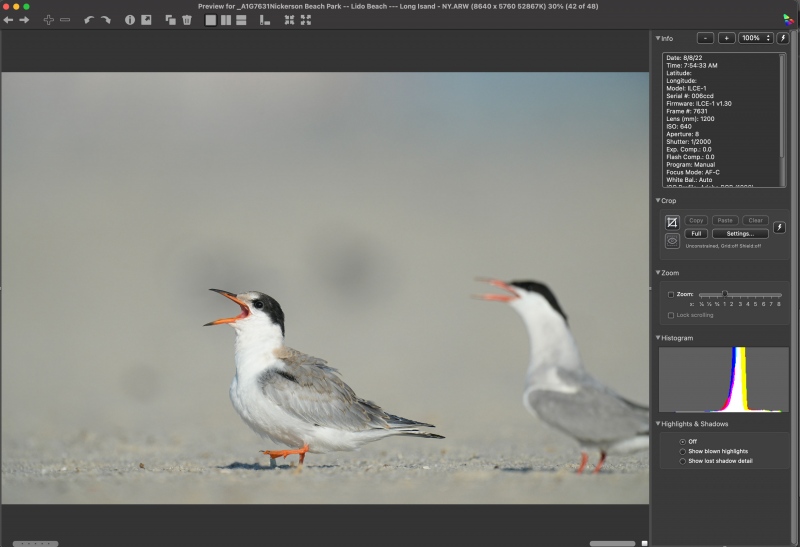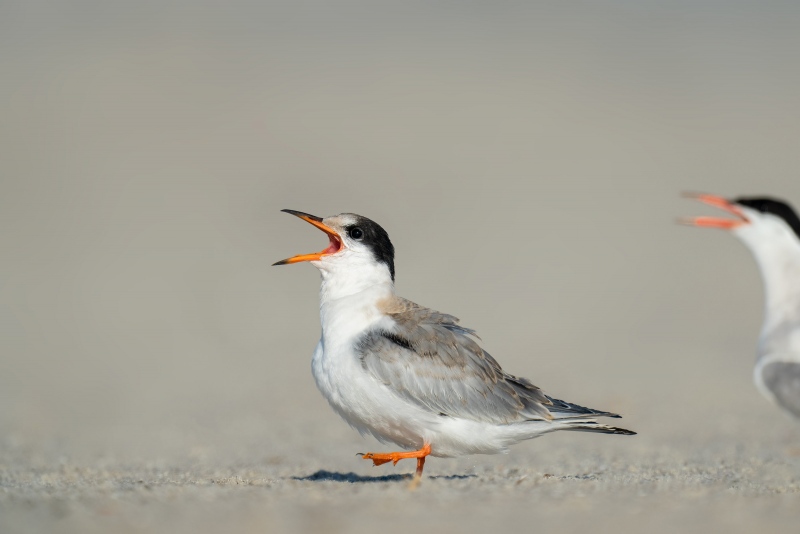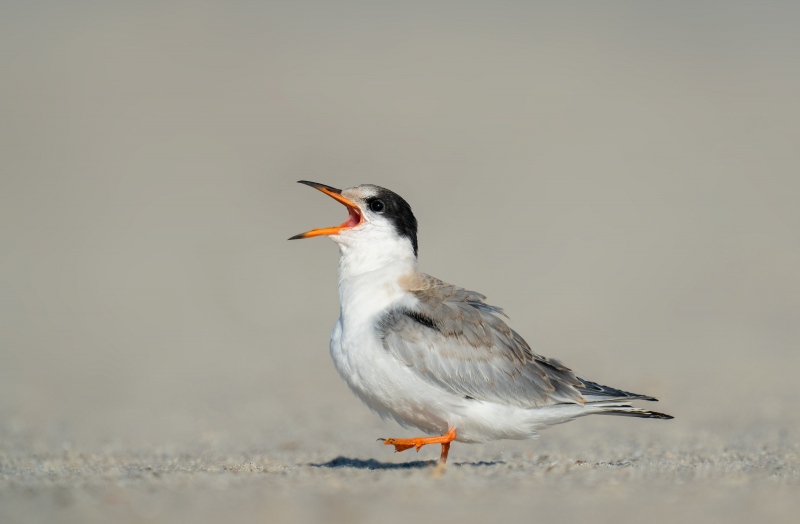August 12th, 2022 What’s Up?
I enjoyed sleeping in on the rainy Thursday morning and got a ton of work done. I was glad to learn that repeat In-the-Field client Dan Gerstman will be doing me at the East Pan and that multiple IPT veteran and good friend Muhammad Arif will be joining me there on Saturday. We will be hanging around to do the Jamaica Bay Shorebird Festival. If you plan on attending, bring a lens for some free photo tips. Meet at the visitor center at 9:00am sharp.
But the best news of all was that blog regular Bob Eastman is signing up for the first and the third Homer IPTs. He will be borrowing my big SUV for six days and tooling around Homer during the second IPT. It will be great to finally meet him as we seem to be kindred spirits. If you’ve been thinking about Homer, best to act soon as it is filling nicely. Especially if you want to do the second and third trips back-to-back.
On Thursday afternoon, I headed to Nickerson. It was sunny with a south by slightly west wind. Not bad, not great. For the first 90 minutes, I did handheld skimmer flight with the bare 600 and the a1, concentrating on the midair battles. A friend found a nest with three tiny, pure white, day-old chicks. Even though the wind was excellent, the mother bird spent most of the afternoon facing to the east. Bummer. I moved to the north and worked with both TCs for the last half hour of light. I think that my best image was of a medium-sized skimmer chick swallowing an Atlantic Silversides, one of the last series I made just as the sun disappeared behind a cloud.
I forgot to mention yesterday that on Wednesday morning at JBWR I glanced to my left as I was photographing the phalarope and saw a dark bird with pointy wings flying lazily. “Looks like a young Laughing Gull but just might be a Peregrine Falcon.: I was chasing TCs so photographically, it did not matter which it was. Because of the lazy flight pattern, I had just about decided on juvie Laughing Gull when the bird turned slightly to its left, pumped its wing several times, and executed a shallow stoop on the flock of shorebirds just to my left. Once again, I was caught with my proverbial pants down, but it sure was a thrill seeing the powerful predator flying right at me at high speed. Next time …
Today is Friday 12 August 2022. I will be headed early to the East Pond. I am excited as the weather is looking really good. Wherever you are, and whatever you are doing, I hope that you too have a great day. This blog post took about two hours to prepare and makes one hundred forty-one days in a row with a new one.
So far, eight folks have been in touch about joining me at either Nickerson or JBWR in the coming weeks for an In-the-Field session or two. The first window for doing shorebirds at the East Pond at Jamaica Bay Wildlife Refuge is closing now, the second window is from 24-26 August. See the additional details below.
Please remember to use the B&H and Amazon links that are found on most blog pages and to use the BIRDSASART discount code at checkout when purchasing your new gear from Bedfords to get 3% back on your credit card and enjoy free second-day air FedEx. Please, also, consider joining a BAA IPT. You will be amazed at how much you will learn!
|
|
|
Clockwise from the upper left corner back around to the center: Wilson’s Phalarope, JBWR; just fledged Common Tern, Nickerson; Black Skimmer, adult skimming, Nickerson; Black Skimmer killing tiny skimmer chick, Nickerson; American Oystercatcher foraging at sunrise, Nickerson; Common Tern chick swallowing baby bluefish, Nickerson; Short-billed Dowitcher, juvenile, double overhead wing stretch, JBWR; Black Skimmers, predawn flock blur, Nickerson; Black Skimmer, 10-day old chick, Nickerson.
Click on the card to view a larger version.
Nickerson Beach/East Pond JBWR composite
|
Nickerson Beach/East Pond at Jamaica Bay (JBWR) In-the Field Workshops
Both Nickerson Beach and the East Pond at JBWR offer some of the best midsummer bird photography on the planet. Hundreds of pairs or Black Skimmers and Common Terns along with more than a dozen pairs of American Oystercatchers breed at Nickerson each season so there are lots of chicks of all sizes and handsome fledged young to photograph. Provided that the water levels are low, hundreds of young shorebirds in their handsome fresh juvenile plumages stop by the pond each August on their way south.
Nickerson often reveals nature at it rawest, most basic level. Most days we get to photograph all sorts of dramatic behaviors ranging from skimmers and terns fishing and feeding (and tending) their you. There are often chances to shoot a variety of predatory encounters — gulls eating large skimmer chicks, skimmers eating skimmer babies, and Peregrine Falcons hunting. And rarely, if we are lucky, Peregrine Falcons catching! Consider joining me to learn a ton both about bird photography and the birds.
I am taking the Auto Train north on 31 July and will happily spend all of August on Long Island. I head south on 31 August and should be back home on 1 September (barring anything unforeseen). I am offering In-the-Field sessions at both Nickerson Beach and the East Pond at Jamaica Bay Wildlife Refuge. If you are interested, please get in touch via e-mail or text me at 863-221-2372.
Whether you are a local or would like to fly in for several days of instruction — a sort of private, or small group. — at worst, IPT, LMK via e-mail so that we can work on a schedule that could possibly include both Nickerson and Jamaica Bay.
Instagram
Follow me on Instagram here. I am trying to feature both new and old images, especially images that have not appeared recently on the blog. Or search for birds_as_art.
BIRDS AS ART Image Optimization Service (BAA IOS)
Send a PayPal for $62.00 to birdsasart@verizon.net or call Jim at 863-692-0906 and put $62.00 on your credit card. Pick one of your best images and upload the raw file using a large file sending service like Hightail or DropBox and then send me the link via e-mail. I will download and save your raw file, evaluate the exposure and sharpness, and optimize the image as if it were my own after converting the raw file in Adobe Camera Raw. Best of all, I will make a screen recording of the entire process and send you a link to the video to download, save and study.
Induro GIT 304L Price Drop
Amazingly, we have two, brand-new-in-the-box Induro GIT 304L tripods in stock. They are $699.00 each (were $799.00) and the price now includes the insured ground shipping to the lower 48 states. Weekday phone orders only: 863-692-0906. Order yours here while they last.
Please Remember
You can find some great photo accessories (and necessities, like surf booties!) on Amazon by clicking on the Stuff tab on the orange/yellow menu bar above. On a related note, it would be extremely helpful if blog-folks who, like me, spend too much money on Amazon, would get in the habit of clicking on the Amazon logo link on the right side of each blog post when they shop online. As you might expect, doing so will not cost you a single penny, but would be appreciated tremendously by yours truly. And doing so works seamlessly with your Amazon Prime account.
Please remember that if an item — a Delkin flash card, or a tripod head — for example, that is available from B&H and/or Bedfords, is also available in the BAA Online Store, it would be great, and greatly appreciated, if you would opt to purchase from us. We will match any price. Please remember also to use my B&H affiliate links or to earn 3% cash back at Bedfords by using the BIRDSASART discount code at checkout for your major gear purchases. Doing either often earns you free guides and/or discounts. And always earns my great appreciation.
Brand-New and As-Good-As-Ever Bedfords BAA Discount Policy
Folks who have fallen in love with Bedfords can now use the BIRDSASART coupon code at checkout to enjoy a post-purchase, 3% off-statement credit (excluding taxes and shipping charges) on orders paid with a credit card. The 3% credit will be refunded to the card you used for your purchase. Be sure, also, to check the box for free shipping to enjoy free Second Day Air Fed-Ex. This offer does not apply to purchases of Classes, Gift Cards, or to any prior purchases.
Money Saving Reminder
Many have learned that if you need a hot photo item that is out of stock at B&H and would like to enjoy getting 3% back on your credit card along with free 2nd Day Air Fed-Ex Air shipping, your best bet is to click here, place an order with Bedfords, and enter the coupon code BIRDSASART at checkout. If an item is out of stock, contact Steve Elkins via e-mail or on his cell phone at (479) 381-2592 (Central time). Be sure to mention the BIRDSASART coupon code and check the box for Free Shipping. That will automatically upgrade to free 2nd Day Air Fed-Ex. Steve has been great at getting folks the hot items that are out of stock at B&H and everywhere else. The waitlists at the big stores can be a year or longer for the hard-to-get items. Steve will surely get you your gear long before that. For the past year, he has been helping BAA Blog folks get their hands on items like the SONY a 1, the SONY 200-600 G OSS lens, the Canon EOS R5, the Canon RF 100-500mm lens, and the Nikon 500mm PF. Steve is personable, helpful, and eager to please.
Important Note
As an Amazon Associate, I earn a small percentage when you purchase from Amazon after using any of the Amazon links on the blog (including the logo-link on the right side of each blog post page). My affiliate link works fine with Amazon Prime and using it will not cost you a single cent. Huge thanks, BTW 🙂
If You Enjoy the Blog …
Please, if you enjoy and learn from the blog, remember to use one of my two affiliate programs when purchasing new gear. Doing so just might make it possible for me to avoid having to try to get a job as a Walmart greeter and will not cost you a single penny more. And if you use Bedfords and remember to enter the BIRDSASART code at checkout, you will (still!) save 3% on every order and enjoy free second-day air shipping. In these crazy times — I lost about fifty thousand dollars in income due to COVID 19 — remembering to use my B&H link or to shop at Bedfords will help me out a ton and be greatly appreciated. Overseas folks who cannot order from the US because of import fees, duties, and taxes, are invited to help out by clicking here to leave a blog thank you gift if they see fit.


Gear Questions and Advice
Too many folks attending BAA IPTs and dozens of photographers whom I see in the field and on BPN, are–out of ignorance–using the wrong gear, especially when it comes to tripods and more especially, tripod heads… Please know that I am always glad to answer your gear questions via e-mail. If you are desperate, you can try me on my cell at 863-221-2372. Please leave a message and shoot me a text if I do not pick up.
|
|
|
This image was also created on 8 August 2022 at Nickerson Beach Park, Lido Beach, Long Island, NY. While seated on dry sand with my eye to the viewfinder, I used the lowered, no-longer available except from BIRDS AS ART, Induro GIT 304L tripod/Levered-Clamp FlexShooter Pro-mounted Sony FE 600mm f/4 GM OSS lens with the Sony FE 1.4x Teleconverter (at 840mm) and The One, the Sony Alpha 1 Mirrorless Digital Camera). The exposure was determined via Zebra technology with ISO on the thumb dial. ISO 1250. 1/3200 sec. at f/5.6 (wide open) in Manual mode. When evaluated in RawDigger, it was determined that the raw file was about 1/2 stop too dark because you must expose for the brightest sky close to the sun. AWB at 6:17:16am on a mostly clear morning less than 20 minutes after sunrise.
Tracking: Zone/AF-C with Bird-Eye/Face Detection performed perfectly. Be sure to click on the image to enjoy a high-res version.
Image #1: Yellow/orange backlit Black Skimmer incoming with baitfish for chick
|
The New Technique: Making Early Morning Backlit Hay While the Sun Shines in your Face & the Wind is Behind You
The “new” technique, making good early morning backlit images when the sun is shining in your face and the wind is behind you (AKA wind-against-sun) conditions, is not really new. I have been using it sporadically for years at various locations including Nickerson Beach. The new twists this season include sitting to eliminate the distant background, working for more than an hour after the time of sunrise, using the 2X on occasion, especially when doing the (smaller) terns, and exploring different processing options.
|
|
|
This image was also created on 8 August 2022 at Nickerson Beach Park, Lido Beach, Long Island, NY. While seated on dry sand with my eye to the viewfinder, I used the lowered, no-longer available except from BIRDS AS ART, Induro GIT 304L tripod/Levered-Clamp FlexShooter Pro-mounted Sony FE 600mm f/4 GM OSS lens with the Sony FE 1.4x Teleconverter (wide open at 840mm) and The One, the Sony Alpha 1 Mirrorless Digital Camera). The exposure was determined via Zebra technology with ISO on the thumb dial. ISO 1000. 1/4000 sec. at f/5.6 (wide open) in Manual mode. When evaluated in RawDigger, it was determined that the raw file was about one full stop too dark, again, because you must expose for the brightest sky close to the sun. Thus, areas away from the sun will be under-exposed to varying degrees. AWB at 6:21:17am on a mostly clear morning, again less than 20 minutes after sunrise.
Tracking: Zone/AF-C with Bird-Eye/Face Detection performed perfectly. Be sure to click on the image to enjoy a high-res version.
Image #2: Stark, Black & White Black Skimmer starting dive silhouette
|
Post Processing Options
Understand that the properly exposed raw files in this situation should and will appear washed. That said, the golden color will always be there. You can process the images toward the gold end using a variety of techniques that are covered in BIRDS AS ART Current Workflow e-Guide (Digital Basics II), an instructional PDF that is sent via e-mail. In addition, several of these methods have been mentioned in recent blog posts. Or you can convert them to be rendered as stark black and whites, as I did with Image #2. The choice is yours.
|
|
|
This image was created on 8 August 2022 at Nickerson Beach Park, Lido Beach, Long Island, NY. While seated on dry sand with my eye to the viewfinder, I used the lowered, no-longer available except from BIRDS AS ART, Induro GIT 304L tripod/Levered-Clamp FlexShooter Pro-mounted Sony FE 600mm f/4 GM OSS lens, the Sony FE 2.0x Teleconverter (at 1200mm) and The One, the Sony Alpha 1 Mirrorless Digital Camera). The exposure was determined via Zebra technology with ISO on the thumb dial. ISO 800. 1/5000 sec. at f/8 (wide open) in Manual mode. When evaluated in RawDigger, it was determined that the raw file was about 1/3 stop too dark (due to operator error). AWB at 7:02:31am on a mostly clear morning less than seven minutes after sunrise.
Tracking: Zone/AF-C with Bird-Eye/Face Detection performed perfectly. Be sure to click on the image to enjoy a high-res version.
Image #3: Golden backlit Common Tern landing with baitfish for chick
|
Maximum Focal Length for the Smaller Terns
I found a spot where the skimmers and terns are nesting close together near the top of a dune. As both species fish predominately early and late in the day, there is lots of landing flight action. Once you go to 1200mm, there is a possibility of clipping the wings of the skimmers (as I did with Image #2). The huge advantage, however, is getting more pixels the subject when photographing the Common Terns; they are a lot smaller than the skimmers. Know that the terns will often kite before landing (“hover” is the incorrect term used by most folks use).
While I opted for the golden silhouette look for this image, I could have processed it to reveal details and color on the tern (as I did with the skimmer in Image #1), or, I could have opted for the stark silhouette look as in Image #2.
Coming or Going?
Is this bird in Image #3 above flying toward us or away from us? How do you know?
|
|
|
This image was created on 8 August 2022 at Nickerson Beach Park, Lido Beach, Long Island, NY. While seated on dry sand with my eye to the viewfinder, I used the lowered, no-longer available except from BIRDS AS ART, Induro GIT 304L tripod/Levered-Clamp FlexShooter Pro-mounted Sony FE 600mm f/4 GM OSS lens, the Sony FE 2.0x Teleconverter (at 120mm) and The One, the Sony Alpha 1 Mirrorless Digital Camera). The exposure was determined via Zebra technology with ISO on the thumb dial. ISO 800. 1/5000 sec. at f/8 (wide open) in Manual mode. When evaluated in RawDigger, it was determined that the raw file was about 1/3 stop too dark (due to operator error). AWB at 7:04:43am on a mostly clear morning more than an hour after sunrise.
Tracking: Zone/AF-C with Bird-Eye/Face Detection performed perfectly. Be sure to click on the image to enjoy a high-res version.
Image #4: Golden backlit Black Skimmer landing with baitfish for chick
|
Later in the Morning
As you approach an hour after sunrise, the sun will of course be higher in the sky. The backlight will not be as dramatic as it was right after sunrise, but with the wind behind you, trying for backlit incoming flight is often your best option. For best results, concentrate on incoming birds that are in line with the sun while flying well below it and are just above the grasses. Remember, nearly all the birds on the beach will be facing away from you.
Jeez, I Almost Forgot to Mention
How about making razor-sharp flight images at 1200mm with the Sony A1? Who could have ever dreamed it?
|
|
All images from Homer or Kachemak Bay, AK
|
2023 Homer/Kachemak Bay Bald Eagle IPTs
IPT #1: MON 20 FEB 2023 through the full day on FRI 24 FEB 2023. Five full days/20 hours on the boat: $5500.00. Limit 5 photographers/Openings: 3.
IPT #2: SAT 25 FEB 2023 through the full day on THURS 2 MAR 2023. Six full days/24 hours on the boat: $6600.00. Limit 5 photographers/Openings: 2.
IPT #3: FRI 3 MAR 2023 through the full day on TUES 7 MAR 2023. Five full days/20 hours on the boat: $5500.00. Limit 5 photographers. Openings: 4.
Save $1,000.00 by doing back-to-back trips.
These trips feature non-stop flight photography as well as many opportunities to create both environmental and point-blank portraits of one of North America’s most sought-after avian subjects: Bald Eagle (Haliaeetus leucocephalus). Other reliable subjects will include Sea Otter, Glaucous-winged and Short-billed (formerly Mew) Gulls.
In addition, we should see Common Murre, Black Guillemot, Pelagic Cormorant, two or three species of loons, and a smattering of ducks including two species of merganser, all three scoters, Common and Barrow’s Goldeneyes, Bufflehead, Harlequin, and Long-tailed Ducks. Close-range photographic chances for these species will require a ton of good luck. Some of these species, especially when in flocks, can, however, often be used effectively when pleasing creating bird-scapes.
If we need to be out early, we will be the first boat out. If conditions are great, we will stay out. And when there is a chance for sunset silhouettes, we will be in the right spot.
We will be traveling through gorgeous wilderness country; landscape and scenic opportunities abound.
Also featured is a professional leader, often referred to as the world’s most knowledgeable bird photography trip leader, who is conversant in Canon, Nikon, and Sony. You will learn practical and creative solutions to everyday photographic problems. You will learn to see the shot, to create dynamic images by fine-tuning your compositions, to best utilize your camera’s AF system, and how to analyze the wind, the sky conditions, and the direction and quality of the light. This is one of the very few trips Homer trips available where you will not be simply put on the birds and told to have fun. You will learn to be a better photographer. But only if that is what you want.
You will learn to get the right exposure when it is sunny, when it cloudy-bright, when it is cloudy, when it is cloudy-dark, or when it is foggy. Not to mention getting the right exposure when creating silhouettes.
You will learn to make pleasing blurs working in manual mode and to create silhouettes working in Shutter Priority mode.
Most importantly you will learn to pick your best flight images from tens of thousands of images.
You will enjoy working with the two best and most creative boat captains on their sturdy, photography-spacious, seaworthy, open-deck crafts.
The second and third IPTs are the only Bald Eagle workshops that feature an incredibly helpful first mate.
Only five photographers (not the usual six), plus the leader.
Small group Photoshop, Image Review, and Image Critiquing sessions.
|
|
All images from Homer or Kachemak Bay, AK
|
What’s Included
One four hour or two two-hour boat trips every day (weather permitting), all boat fees and boat-related expenses (excluding tips), ground transportation to and from the dock and back to the hotel each day, in-the-field instruction and guidance, pre-trip gear advice, small group post-processing and image review sessions, and a thank you dinner for all well-behaved participants.
What’s Not Included
Your airfare to and from Homer, AK (via Anchorage), the cost of your room at Land’s End Resort, all personal items, all meals and beverages, and tips for the boat captain and/or the first mate.
Please Note
On great days, the group may wish to photograph for more than four hours. If the total time on the boat exceeds 20 hours for the five-day trips, or 24 hours for the second trip, the group will share the additional expense at a rate of $225/hour.
Some folks may wish to rent their own vehicle to take advantage of local photographic opportunities around Homer.
Deposit Information
A $3000 non-refundable deposit/trip is required. You may pay your deposit with credit card or by personal check (made out to BIRDS AS ART) and sent via US mail only to Arthur Morris. PO Box 7245. Indian Lake Estates, FL 33855. Your balance, due 90 days before the date of departure, is payable only by check as above.
In Closing
I have been going to Homer off and on for close to two decades. Every trip has been nothing short of fantastic. Many folks go in mid-March. The earlier you go, the better the chances for snow. The only way to assure that you are on the best of the three trips is to sign up for all of them. Can you keep up with me? If you have any questions, or are good to go for one, two, or all three trips, please let me know via e-mail or give me a call on my cell phone at 863-221-2372.
Typos
With all blog posts, feel free to e-mail or to leave a comment regarding any typos or errors.
August 11th, 2022 Your Favorite Shorebird Image?
All are invited to leave a comment letting us know which of today’s four featured shorebird images is your favorite and why you made your choice. Though I love them all, I have a tie for first. And I have my reasons 🙂
What’s Up?
With mostly cloudy-bright skies, a decent breeze from the NNE, lots of shorebirds, and the perfect low water level, conditions at the East Pond at Jamaica Bay Wildlife Refuge were far better on Wednesday than they’ve been in many years.
Today is 11 August 2022. It is raining hard on Long Island this morning. The weather for Nickerson Beach is looking good for this afternoon, as is the weather for Friday morning at JBay. If you’d like to learn shorebird photography, consider joining me at the East Pond on Friday morning. Details below. Wherever you are, and whatever you are doing, I hope that you too have a great day. This blog post took about two hours to prepare and makes one hundred forty days in a row with a new one.
So far, eight folks have been in touch about joining me at either Nickerson or JBWR in the coming weeks for an In-the-Field session or two. The first window for doing shorebirds at the East Pond at Jamaica Bay Wildlife Refuge is closing now, the second window is from 24-26 August. See the additional details below.
Please remember to use the B&H and Amazon links that are found on most blog pages and to use the BIRDSASART discount code at checkout when purchasing your new gear from Bedfords to get 3% back on your credit card and enjoy free second-day air FedEx. Please, also, consider joining a BAA IPT. You will be amazed at how much you will learn!
|
|
|
Clockwise from the upper left corner back around to the center: Wilson’s Phalarope, JBWR; just fledged Common Tern, Nickerson; Black Skimmer, adult skimming, Nickerson; Black Skimmer killing tiny skimmer chick, Nickerson; American Oystercatcher foraging at sunrise, Nickerson; Common Tern chick swallowing baby bluefish, Nickerson; Short-billed Dowitcher, juvenile, double overhead wing stretch, JBWR; Black Skimmers, predawn flock blur, Nickerson; Black Skimmer, 10-day old chick, Nickerson.
Click on the card to view a larger version.
Nickerson Beach/East Pond JBWR composite
|
Nickerson Beach/East Pond at Jamaica Bay (JBWR) In-the Field Workshops
Both Nickerson Beach and the East Pond at JBWR offer some of the best midsummer bird photography on the planet. Hundreds of pairs or Black Skimmers and Common Terns along with more than a dozen pairs of American Oystercatchers breed at Nickerson each season so there are lots of chicks of all sizes and handsome fledged young to photograph. Provided that the water levels are low, hundreds of young shorebirds in their handsome fresh juvenile plumages stop by the pond each August on their way south.
Nickerson often reveals nature at it rawest, most basic level. Most days we get to photograph all sorts of dramatic behaviors ranging from skimmers and terns fishing and feeding (and tending) their you. There are often chances to shoot a variety of predatory encounters — gulls eating large skimmer chicks, skimmers eating skimmer babies, and Peregrine Falcons hunting. And rarely, if we are lucky, Peregrine Falcons catching! Consider joining me to learn a ton both about bird photography and the birds.
I am taking the Auto Train north on 31 July and will happily spend all of August on Long Island. I head south on 31 August and should be back home on 1 September (barring anything unforeseen). I am offering In-the-Field sessions at both Nickerson Beach and the East Pond at Jamaica Bay Wildlife Refuge. If you are interested, please get in touch via e-mail or text me at 863-221-2372.
Whether you are a local or would like to fly in for several days of instruction — a sort of private, or small group. — at worst, IPT, LMK via e-mail so that we can work on a schedule that could possibly include both Nickerson and Jamaica Bay.
|
|
|
This image was created on 10 August 2022 at the East Pond, Jamaica Bay Wildlife Refuge. Queens, NY. While sitting on wet mud, I used the flattened, no-longer available except from BIRDS AS ART, Induro GIT 304L tripod/Levered-Clamp FlexShooter Pro-mounted Sony FE 600mm f/4 GM OSS lens with the Sony FE 1.4x Teleconverter (at 840mm) with The One, the Sony a1 Mirrorless Camera. The exposure was determined via Zebras with ISO on the Thumb Wheel. ISO 1250: 1/500 sec. at f/5.6. AWB at 7:08:59am on a variably cloudy morning.
Tracking: Zone/AF-C with Bird Eye/Face Detection performed perfectly all morning long by accurately tracking the birds’ eyes (as long as the birds were not moving quickly, filling the whole frame, or turning their heads away).
Image #1: Short-billed Dowitcher in fresh Juvenal plumage
|
Off to a Great Start
I analyzed the situation, picked what I thought would be the best spot, flattened the tripod, and sat down in the mud. Within minutes, the birds came. The Semipalmated Sandpipers (almost all adults) and the Lesser Yellowlegs (all juveniles) flew in quickly right in front of me. Many of the semi-Ps were too large in the frame. The sun was out briefly, and I made some good Lesser Yellowlegs images. The sun disappeared just as a fresh juvie short-billed dow flew in. With the north wind, most of the birds would forage from my left to my right, to the north. I was patient and waited for the SBD to work its way into the clear.
|
|
|
This image was also created on 10 August 2022 at the East Pond, Jamaica Bay Wildlife Refuge. Queens, NY. Again, while sitting on wet mud, I used the flattened, no-longer available except from BIRDS AS ART, Induro GIT 304L tripod/Levered-Clamp FlexShooter Pro-mounted Sony FE 600mm f/4 GM OSS lens with the Sony FE 1.4x Teleconverter (at 840mm) with The One, the Sony a1 Mirrorless Camera. The exposure was determined via Zebras with ISO on the Thumb Wheel. ISO 1000: 1/800 sec. at f/5.6. AWB at 7:24:08am on a variably cloudy morning.
Tracking: Spot S/AF-C with Bird Eye/Face Detection performed perfectly all morning long by accurately tracking the birds’ eyes (as long as the birds were not moving quickly, filling the whole frame, or turning their heads away).
Image #2: Juvenile Lesser Yellowlegs and shorebird flock
|
Nervous Nellies
The birds were quite slightly. The flocks would take off en masse, circle a few times, and re-land. With no birds in front of me, I focused on the single Lesser Yellowlegs in the canter of the frame in hopes of creating a decent bird-scape. I was framing the shot when a swirling, circling flock of shorebirds flew into the frame. Doing as I preach, I pressed and held the shutter button until all the flying birds had left the frame.
As I say here often, one of the keys to success in nature, wildlife, and bird photography is to strive to create something different. In 39 years of photographing at the East Pond, I had never created an image remotely like this one.
The Lesson
When unexpected action happens, press the shutter button.
|
|
|
This image was also created on 10 August 2022 at the East Pond, Jamaica Bay Wildlife Refuge. Queens, NY. While sitting on wet mud, I used the flattened, no-longer available except from BIRDS AS ART, Induro GIT 304L tripod/Levered-Clamp FlexShooter Pro-mounted Sony FE 600mm f/4 GM OSS lens with the Sony FE 1.4x Teleconverter (at 840mm) with The One, the Sony a1 Mirrorless Camera. The exposure was determined via Zebras with ISO on the Thumb Wheel. ISO 1600: 1/1600 sec. at f/5.6. AWB at 8:53:14am on a variably cloudy morning.
Tracking: Zone/AF-C with Bird Eye/Face Detection performed perfectly all morning long by accurately tracking the birds’ eyes (as long as the birds were not moving quickly, filling the whole frame, or turning their heads away).
Image #3: Juvenile Wilson’s Phalarope
|
What’s a Good Bird?
Good birds are birds that are uncommon at a given location. In most years, small numbers of phalaropes visit the East Pond. Wilson’s are the most frequent visitors, followed by Red-necked. Wilson’s are recorded in most years. Single birds are most frequent, but small groups of three to six might be found on rare occasion. Red-neckeds are often missed. I do not think that Red Phalarope –Grey Phalarope across the pond, Phalaropus fulicarius), has ever been recorded at Jamaica Bay (though there may have been one occurrence). Please correct me if I am wrong.
I had walked to the Raunt to check things out and a birder mentioned that he had seen one that morning. As I walked back to the South Flats, I was thrilled to see the juvenile Wilson’s swimming around close to shore. So, I got down on the ground and went to work. And yes, Wilson’s Phalarope is a good bird in pretty much all shorebird locations on the east coast of North America.
|
|
|
This image was also created on 10 August 2022 at the East Pond, Jamaica Bay Wildlife Refuge. Queens, NY. While sitting on wet mud, I used the flattened, no-longer available except from BIRDS AS ART, Induro GIT 304L tripod/Levered-Clamp FlexShooter Pro-mounted Sony FE 600mm f/4 GM OSS lens with the Sony FE 1.4x Teleconverter (at 840mm) with The One, the Sony a1 Mirrorless Camera. The exposure was determined via Zebras with ISO on the Thumb Wheel. ISO 1600: 1/1600 sec. at f/5.6. AWB at 8:53:14am on a variably cloudy morning.
Tracking: Zone/AF-C with Bird Eye/Face Detection performed perfectly all morning long by accurately tracking the birds’ eyes (as long as the birds were not moving quickly, filling the whole frame, or turning their heads away).
Image #4: Marbled Godwit
|
Another Good Bird
Marbled Godwit is another good bird for JBay. In most years, one or two may be present during southbound migration from late June through November. I had seen the MAGO flying around at the south end. When the phalarope flew away, the godwit landed to the south. I made my way slowly toward the bird as it foraged among towering Canada geese. Again, I waited for the bird to come to me rather than trying to approach it closely and cause it to fly away. My strategy worked perfectly.
In 1976 or 77, I walked onto the South Flats at the East Pond on a still August morning. As the tide in the surrounding bay was “wrong,” there was only a single bird present. It was a large cinnamon colored shorebird with a long slightly upcurved bill. The bill was dusky grey at the end, and the proximal half was a lovely alabaster pink. It was my very first Marbled Godwit. I had no idea at the time that seeing the one bird would change the course of the remainder of my adult life. But it did. And all for the good.
Typos
With all blog posts, feel free to e-mail or to leave a comment regarding any typos or errors.
August 10th, 2022 Wanted to Buy
I have a serious buyer who would like to purchase your Canon 100-400mm L IS II lens. If you have one that you would like to sell, please contact me via e-mail.
What’s Up?
There were more clear skies and more southwest winds to deal with on Tuesday morning. I made my first image at 5:43am in the predawn light. At 6:19am, after making another 333 images (including a very few good ones), I saw a single skimmer land on clean sand to my right. The sun had just risen above a distant cloudy sky. I moved carefully to place the bird in front of an absolutely glowing yellow backdrop. I made the first image of this bird at 6:20:05am. One minute 20 seconds later, at 6:21:25, I was sated. I called another photographer in to enjoy the great situation and moved to my right. When the smoke cleared, I had created 316 images. That is surely a record for me. Other than the fact that the skimmer had beaten the fish up pretty well, it was as perfect a situation as you could wish for. I will be sharing the best one with you here soon. 🙂
As the sun got brighter, I worked on refining my new technique for dealing with these difficult, wind-against-sun conditions. I photographed incoming backlit skimmers and terns, many carrying baitfish for their chicks, with the tripod-mounted 600 GM/2X TC/a/1 rig. Again, I sat to eliminate the distant background of cabanas and buildings and replace that with a golden sky and a nice row of beach grasses along the bottom of the frame.
On Tuesday afternoon, Carlotta Grenier joined me for a flight photography In-the-Field Session at Nickerson Beach. The session started off great with sunshine and a brisk southwest wind. I went over the basics of shooting flight off the tripod with a 600mm f/4 lens. Set the limit range switch to not full, tripod raised so that the camera body is comfortably at eye level, go with Tracking Zone AF, a shutter speed of 1/3200 second or more, and raise the ISO until you get some faint Zebras on the bird’s white bellies. Pan, frame, and fire. Later in the afternoon there were dozens of blast-offs. On the largest of those, we finally saw a peregrine streak by.
Today is Wednesday 10 August 2022. I will be visiting the East Pond at JBWR early today. Water levels and the weather are looking ideal and I am excited about returning to my soul place. Wherever you are and whatever you are doing, I hope that you too have a great day. This blog post took about two hours to prepare and makes one hundred thirty-nine days in a row with a new one.
So far, eight folks have been in touch about joining me at either Nickerson or JBWR in the coming weeks for an In-the-Field session or two. The first window for doing shorebirds at the East Pond at Jamaica Bay Wildlife Refuge is from 10-12 August, the second window is 24-26 August. See the additional details below.
Please remember to use the B&H and Amazon links that are found on most blog pages and to use the BIRDSASART discount code at checkout when purchasing your new gear from Bedfords to get 3% back on your credit card and enjoy free second-day air FedEx. Please, also, consider joining a BAA IPT. You will be amazed at how much you will learn!
Canon 800mm f/5.6L ISUSM Lens/with extras!
BAA Record-low Price!
Price Reduced $400 on 18 July 2022!
Price Reduced $400 on 9 July 2022!
Galapagos IPT veteran (with wife Sandy), Don Selesky, is offering a Canon EF 800mm f/5.6L IS USM lens in like-new condition the BAA record-low price of $5997.00 (was $6,797.00). The sale includes the rear lens cap, the lens trunk and key, the original tough front lens cover, and insured ground shipping via major courier to lower-48 US addresses only. Your item will not ship until your check clears unless other arrangements are made.
Please contact Don via e-mail.
I used this lens, often with a 1.4X TC, as my main super-telephoto lens for five years. It is a superb lens that offers lots of reach for those working with birds that are skittish. It is great from the car. I was astounded that 15 of the 67 images in the San Diego exhibit were created with the 800. I missed it terribly for years. It will seriously kill with an R5 or an R6 and an RF-EF Adapter! This lens sells new at B&H for $12,999 but is back-ordered everywhere. Don’s lens is a superb buy; grab it now and save a very sweet $7902.00! artie
|
|
|
Clockwise from the upper left corner back around to the center: Wilson’s Phalarope, JBWR; just fledged Common Tern, Nickerson; Black Skimmer, adult skimming, Nickerson; Black Skimmer killing tiny skimmer chick, Nickerson; American Oystercatcher foraging at sunrise, Nickerson; Common Tern chick swallowing baby bluefish, Nickerson; Short-billed Dowitcher, juvenile, double overhead wing stretch, JBWR; Black Skimmers, predawn flock blur, Nickerson; Black Skimmer, 10-day old chick, Nickerson.
Click on the card to view a larger version.
Nickerson Beach/East Pond JBWR composite
|
Nickerson Beach/East Pond at Jamaica Bay (JBWR) In-the Field Workshops
Both Nickerson Beach and the East Pond at JBWR offer some of the best midsummer bird photography on the planet. Hundreds of pairs or Black Skimmers and Common Terns along with more than a dozen pairs of American Oystercatchers breed at Nickerson each season so there are lots of chicks of all sizes and handsome fledged young to photograph. Provided that the water levels are low, hundreds of young shorebirds in their handsome fresh juvenile plumages stop by the pond each August on their way south.
Nickerson often reveals nature at it rawest, most basic level. Most days we get to photograph all sorts of dramatic behaviors ranging from skimmers and terns fishing and feeding (and tending) their you. There are often chances to shoot a variety of predatory encounters — gulls eating large skimmer chicks, skimmers eating skimmer babies, and Peregrine Falcons hunting. And rarely, if we are lucky, Peregrine Falcons catching! Consider joining me to learn a ton both about bird photography and the birds.
I am taking the Auto Train north on 31 July and will happily spend all of August on Long Island. I head south on 31 August and should be back home on 1 September (barring anything unforeseen). I am offering In-the-Field sessions at both Nickerson Beach and the East Pond at Jamaica Bay Wildlife Refuge. If you are interested, please get in touch via e-mail or text me at 863-221-2372.
Whether you are a local or would like to fly in for several days of instruction — a sort of private, or small group. — at worst, IPT, LMK via e-mail so that we can work on a schedule that could possibly include both Nickerson and Jamaica Bay.
The First DeSoto IPT
If you are interested in the first DeSoto IPT, 3 1/2 Days, Tuesday 27 September through the morning session on Friday 30 September 2022, know that I just reserved a three-bedroom AirBnB in Gulfport. Share it for four nights with many multiple IPT veteran Monte Brown and me and save a ton on lodging: $83.69/night/person for a whole home. AirBnB photos available upon request. If interested, shoot me an e-mail.
Instagram
Follow me on Instagram here. I am trying to feature both new and old images, especially images that have not appeared recently on the blog. Or search for birds_as_art.
BIRDS AS ART Image Optimization Service (BAA IOS)
Send a PayPal for $62.00 to birdsasart@verizon.net or call Jim at 863-692-0906 and put $62.00 on your credit card. Pick one of your best images and upload the raw file using a large file sending service like Hightail or DropBox and then send me the link via e-mail. I will download and save your raw file, evaluate the exposure and sharpness, and optimize the image as if it were my own after converting the raw file in Adobe Camera Raw. Best of all, I will make a screen recording of the entire process and send you a link to the video to download, save and study.
Induro GIT 304L Price Drop
Amazingly, we have two, brand-new-in-the-box Induro GIT 304L tripods in stock. They are $699.00 each (were $799.00) and the price now includes the insured ground shipping to the lower 48 states. Weekday phone orders only: 863-692-0906. Order yours here while they last.
Please Remember
You can find some great photo accessories (and necessities, like surf booties!) on Amazon by clicking on the Stuff tab on the orange/yellow menu bar above. On a related note, it would be extremely helpful if blog-folks who, like me, spend too much money on Amazon, would get in the habit of clicking on the Amazon logo link on the right side of each blog post when they shop online. As you might expect, doing so will not cost you a single penny, but would be appreciated tremendously by yours truly. And doing so works seamlessly with your Amazon Prime account.
Please remember that if an item — a Delkin flash card, or a tripod head — for example, that is available from B&H and/or Bedfords, is also available in the BAA Online Store, it would be great, and greatly appreciated, if you would opt to purchase from us. We will match any price. Please remember also to use my B&H affiliate links or to earn 3% cash back at Bedfords by using the BIRDSASART discount code at checkout for your major gear purchases. Doing either often earns you free guides and/or discounts. And always earns my great appreciation.
Brand-New and As-Good-As-Ever Bedfords BAA Discount Policy
Folks who have fallen in love with Bedfords can now use the BIRDSASART coupon code at checkout to enjoy a post-purchase, 3% off-statement credit (excluding taxes and shipping charges) on orders paid with a credit card. The 3% credit will be refunded to the card you used for your purchase. Be sure, also, to check the box for free shipping to enjoy free Second Day Air Fed-Ex. This offer does not apply to purchases of Classes, Gift Cards, or to any prior purchases.
Money Saving Reminder
Many have learned that if you need a hot photo item that is out of stock at B&H and would like to enjoy getting 3% back on your credit card along with free 2nd Day Air Fed-Ex Air shipping, your best bet is to click here, place an order with Bedfords, and enter the coupon code BIRDSASART at checkout. If an item is out of stock, contact Steve Elkins via e-mail or on his cell phone at (479) 381-2592 (Central time). Be sure to mention the BIRDSASART coupon code and check the box for Free Shipping. That will automatically upgrade to free 2nd Day Air Fed-Ex. Steve has been great at getting folks the hot items that are out of stock at B&H and everywhere else. The waitlists at the big stores can be a year or longer for the hard-to-get items. Steve will surely get you your gear long before that. For the past year, he has been helping BAA Blog folks get their hands on items like the SONY a 1, the SONY 200-600 G OSS lens, the Canon EOS R5, the Canon RF 100-500mm lens, and the Nikon 500mm PF. Steve is personable, helpful, and eager to please.
Important Note
As an Amazon Associate, I earn a small percentage when you purchase from Amazon after using any of the Amazon links on the blog (including the logo-link on the right side of each blog post page). My affiliate link works fine with Amazon Prime and using it will not cost you a single cent. Huge thanks, BTW 🙂
If You Enjoy the Blog …
Please, if you enjoy and learn from the blog, remember to use one of my two affiliate programs when purchasing new gear. Doing so just might make it possible for me to avoid having to try to get a job as a Walmart greeter and will not cost you a single penny more. And if you use Bedfords and remember to enter the BIRDSASART code at checkout, you will (still!) save 3% on every order and enjoy free second-day air shipping. In these crazy times — I lost about fifty thousand dollars in income due to COVID 19 — remembering to use my B&H link or to shop at Bedfords will help me out a ton and be greatly appreciated. Overseas folks who cannot order from the US because of import fees, duties, and taxes, are invited to help out by clicking here to leave a blog thank you gift if they see fit.


Gear Questions and Advice
Too many folks attending BAA IPTs and dozens of photographers whom I see in the field and on BPN, are–out of ignorance–using the wrong gear, especially when it comes to tripods and more especially, tripod heads… Please know that I am always glad to answer your gear questions via e-mail. If you are desperate, you can try me on my cell at 863-221-2372. Please leave a message and shoot me a text if I do not pick up.
|
|
|
Tracking: Spot S/AF-C with Bird-Eye/Face Detection performed perfectly. Be sure to click on the image to enjoy a high-res version.
Image #1: The Photo Mechanic screen capture for today’s featured image
|
The Situation
I was on my way back to the parking lot before eight am when I noticed several adult Common Terns standing on the upper beach. All but one of them was facing into the southwest wind. With the sun behind me in the east, I would be shooting “up the bird’s butt.” But (one “t”), there was a single bird facing to the south. To get square to the subject, I needed to shoot about 20° off sun angle. I flattened the tripod, got down on the ground, pulled up the rear monitor, found the subject (not an easy task), and made several images as the bird preened its left side.
I was surprised when a young bird landed to the right of and much closer to me than my chosen subject. Just as I got lined up, an adult bird landed near the fledgling. The juvie tern went nuts running around in circles begging. As it turned, it did not care about the wind direction; I had some great action chances with the subject square to the back of the camera (at times) and right down sun angle.
The Lesson
In wind against sun conditions, be on the lookout for the odd bird that is not facing into the wind or for a bird that is so busy doing something that it is not facing into the wind.
|
|
|
This image was created on 8 August 2022 at Nickerson Beach Park, Lido Beach, Long Island, NY. While seated on dry sand, I used the flattened, no-longer available except from BIRDS AS ART, Induro GIT 304L tripod/Levered-Clamp FlexShooter Pro-mounted Sony FE 600mm f/4 GM OSS lens, the Sony FE 2.0x Teleconverter, and The One, the Sony Alpha 1 Mirrorless Digital Camera). The exposure was determined via Zebra technology with ISO on the thumb dial. ISO 640. 1/2000 sec. at f/8 (wide open) in Manual mode. When evaluated in RawDigger, it was determined that the raw file was about 1/3 stop too dark (due to operator error). AWB at 7:54:33 am on a mostly bright morning.
Tracking: Spot S/AF-C with Bird-Eye/Face Detection performed perfectly. Be sure to click on the image to enjoy a high-res version.
Image #1A: Common Tern fledgling begging/Version I
|
The Image Optimization
Looking at Image #1, the Photo Mechanic screen capture, it is obvious that the three dark, out-of-focus circles in the background (distant skimmers, I think), needed to be dealt with. Eliminating the one in the center and the smaller one in front of the young bird was easy; I used the Patch Tool. The blob behind the juvie’s head required more care. First, I carefully selected the bird’s head with the Magnetic Lasso, feathered the selection, and placed it on its own layer. Next, I turned off the Eyeball, activated the layer below, and used a large soft clone stamp brush to eliminate the dark circular blob behind the head. I worked with impunity not caring that I was along away large parts of the bird’s head. When I was done, I simply went back to the layer above, the one with the bird’s head, and clicked the Eyeball back on. The young tern’s head was restored perfectly.
I did some beach cleanup, especially in the area below the young tern’s raised foot. Working large, I rebuilt one claw on the raised foot that had been broken. Next, I painted a Quick Mask of the bird’s eye, placed it on a layer, and ran Topaz Sharpen AI on that layer only. Though the original images was incredibly sharp, that last step brought the eye up a notch.
Rather than cropping from just behind the adult’s legs, I opted to crop from in front of its legs so as to include just the head, neck, and the bend of the wing. To finish off Version I, I pulled the Crop Tool in from the upper left.
Be sure to scroll down to see Version II, a higher crop.
|
|
The BIRDS AS ART Current Workflow e-Guide (Digital Basics II).
You can order your copy from the BAA Online Store here, by sending a PayPal for $40 here, or by calling Jim or Jennifer weekdays at 863-692-0906 with your credit card in hand. Be sure to specify Digital Basics II.
|
The BIRDS AS ART Current Workflow e-Guide (Digital Basics II)
Most of the techniques mentioned above and tons more great Photoshop tips and techniques — along with my complete digital workflow, my cleanup tools with instructions, Digital Eye Doctor Techniques, and all my personalized Keyboard Shortcuts — are covered in detail in the BIRDS AS ART Current Workflow e-Guide (Digital Basics II), an instructional PDF that is sent via e-mail. Note: folks working on a PC and/or those who do not want to miss anything Photoshop may wish to purchase the original Digital Basics along with DB II while saving $15 by clicking here to buy the DB Bundle.
Folks who learn well by following along rather than by reading can check out the complete collection of MP 4 Photoshop Tutorial Videos by clicking here. Note: most of the videos are now priced at an amazingly low $5.00 each.
You can learn how and why I converted all of my Canon digital RAW files in DPP 4 in the DPP 4 RAW Conversion Guide here. More recently, I became proficient at converting my Nikon RAW (NEF) files in Adobe Camera Raw. About three years ago I began converting my Nikon and Sony RAW files in Capture One and did that for two years. You can learn more about Capture One in the Capture One Pro 12 Simplified MP4 Video here. The next step would be to get a copy of Arash Hazeghi’s “The Nikon Photographers’ Guide to Phase One Capture One Pro e-Guide” in the blog post here. Today, I convert my Sony raw files in Photoshop with Adobe Camera Raw.
You can learn advanced Quick Masking and advanced Layer Masking techniques in APTATS I & II. You can save $15 by purchasing the pair.
|
|
|
This image was created on 8 August 2022 at Nickerson Beach Park, Lido Beach, Long Island, NY. While seated on dry sand, I used the flattened, no-longer available except from BIRDS AS ART, Induro GIT 304L tripod/Levered-Clamp FlexShooter Pro-mounted Sony FE 600mm f/4 GM OSS lens, the Sony FE 2.0x Teleconverter, and The One, the Sony Alpha 1 Mirrorless Digital Camera). The exposure was determined via Zebra technology with ISO on the thumb dial. ISO 640. 1/2000 sec. at f/8 (wide open) in Manual mode. When evaluated in RawDigger, it was determined that the raw file was about 1/3 stop too dark (due to operator error). AWB at 7:54:33 am on a mostly bright morning.
Tracking: Spot S/AF-C with Bird-Eye/Face Detection performed perfectly. Be sure to click on the image to enjoy a high-res version.
Image #1B: Common Tern fledgling begging/Version II
|
Version II
For Version II, I executed a tighter crop to feature just the begging fledgling. I used the Patch Tool to eliminate the head of the adult near the right frame-edge.
You Call?
Should I have cropped from just behind the adult’s legs? Why or why not?
Which is the stronger image, Version I or Version II? Why?
Unsolicited via e-mail from Pete Myers
I just spent 4 days in the field in a graduate course in bird photography taught by Artie Morris at Fort DeSoto. After almost 50 years of experience pointing cameras at birds from the Arctic to Tierra del Fuego, New Zealand and beyond, I thought I was good enough. But what I learned from Artie in just four days has taken me to a whole new level. As he aptly puts it, “birds as art,” not simply bird photography. One of those 4 days was the most satisfying I’d ever experienced, anywhere. The IPT left me euphoric about what I’d learned, and frighteningly committed to recreating my portfolio with the techniques and insights he taught me.
Via e-mail from Jim Miller
I can’t stop thinking about how much fun the DeSoto Fall IPT was, and how much I learned. There were so many things that suddenly made perfect sense after I had been confused for so long. Thank you very much for the wonderful trip, and for being a great teacher. As I worked through the raw files last week, I realized what a fantastic lens the 600 GM is. Thanks for the rental! Maybe someday I will be able to afford one. Some images for critique are attached.
By the way, the plant we were looking at along the sidewalk in Gulfport is Blue Porterweed. It is worth a few minutes on the internet to read about it: native of Florida and the Caribbean, used for medicine in The Bahamas, etc. We have it in a large pot in the front yard and it takes a lot of water, but it blooms Spring through Fall. Thank you again, Artie. It was really wonderful to be with you and learn from you.
Via e-mail from Lee Sommie
I want to thank you for making the Fall 2017 Ft. DeSoto IPT such a fun and educational experience for me. I truly did not want the adventure to end. I now look through the viewfinder with an artist’s mindset. And the real bonus was making new friends with fellow students. Thank you for sharing your knowledge and enthusiasm for wildlife photography. I had a great time with you and look forward to more adventures on future IPTs.
Followed by this one
BTW. I downloaded Photo Mechanic and started using it in my workflow. Since I like using Lightroom for my adjustments, I found a way to incorporate Photo Mechanic and Lightroom together. Lightroom was driving me crazy with how slow it is to import and preview photos. I was impressed with how fast you could preview photos and start editing your photos on the DeSoto Fall IPT. Life is too short to wait for applications to import and preview photos and Photo Mechanic solves that problem.
Via e-mail from Muhammad Arif
I had a great time at Fort DeSoto. Thank you for all the instruction, for your help and pointers; my photography has already improved tremendously, and I’ve never made such good bird photos before. I wish I could’ve joined you on Monday and Tuesday morning as well, but work got in the way. It was also nice meeting the folks on the IPT. Thanks again for everything and I hope to join you at a future IPT sometime again.
|

|
|
Fort DeSoto in fall is rife with tame birds. All the images on this card were created at Fort DeSoto in either late September or very early October. I hope that you can join me there this fall. Click on the composite to enjoy a larger version.
Clockwise from upper left to center: Long-billed Curlew, Marbled Godwit, Caspian Tern, Great Egret, Sandwich Tern with fish, Willet, Black-bellied Plover threat display, Snowy Egret, 2-year old Yellow-Crowned Night-Heron, juvenile Yellow-Crowned Night-Heron.
|
The Fall 2022 Fort DeSoto Instructional Photo-Tours
Fall 2022 Fort DeSoto Instructional Photo-Tour #1
3 1/2 Days: Tuesday 27 September through the morning session on Friday 30 September 2022. $1899.00 includes three working lunches. Limit six photographers/Openings five.
Fall 2022 Fort DeSoto Instructional Photo-Tour #2
3 1/2 Days: 7 October through the morning session on Monday 10 October 2022. $1899.00 includes three working lunches. Limit six photographers.
Fall 2022 Fort DeSoto Instructional Photo-Tour #3
3 1/2 Days: Monday 31 October through the morning session on Thursday 3 November 2022. $1899.00 includes three working lunches. Limit six photographers.
Fort DeSoto, located just south of St. Petersburg, FL, is a mecca for migrant shorebirds and terns in fall. There they join hundreds of egrets, herons, night-herons, and gulls that winter on the T-shaped peninsula. With any luck at all, we should get to photograph one of Florida’s most desirable shorebird species: Marbled Godwit. Black-bellied Plover and Willet are easy, American Oystercatcher is pretty much guaranteed. Great Egret, Snowy Egret, Great Blue Heron, Tricolored Heron, and White Ibis are easy as well and we will almost surely come up with a tame Yellow-crowned Night-Heron or two. And we will get to do some Brown Pelican flight photography. In addition, Royal, Sandwich, Forster’s, and Caspian Terns will likely provide us with some good flight opportunities as well. Though not guaranteed, Roseate Spoonbill and Wood Stork might well be expected. And we will be on the lookout for a migrant passerine fallout in the event of a thunderstorm or two.
On this IPT, all will learn the basics and fine points of digital exposure. Nikon and Canon folks will learn to get the right exposure every time after making a single test exposure, and SONY folks will learn to use Zebras so that they can be sure of making excellent exposures before pressing the shutter button. Everyone will learn how to approach free and wild birds without disturbing them, to understand and predict bird behavior, to identify many species of shorebirds, to spot the good situations, to choose the best perspective, to see and understand the light, and to design pleasing images by mastering your camera’s AF system. Most importantly, you will surely learn to evaluate wind and sky conditions and understand how they affect bird photography. And you will learn how and why to work in Manual mode (even if you’re scared of it). The best news is that you will be able to take everything you learn home with you so that you will be a better photographer wherever and whenever you photograph.
There will be a Photoshop/image review session during or after lunch (included) each full day. That will be followed by Instructor Nap Time.
These IPTs will run with only a single registrant (though that is not unlikely to happen). The best airport is Tampa (TPA). Once you register, you will receive an e-mail with Gulfport AirBnB information. If you register soon and would like to share an AirBnB with me, shoot me an e-mail. Other possibilities including taking a cab to and from the airport to our AirBnB and riding with me. This saves you both gas and the cost of a rental car.
A $600 deposit is due when you sign up and is payable by credit card. Balances must be paid by check two months before the trip. Your deposit is non-refundable unless the IPT sells out with six folks, so please check your plans carefully before committing. You can register by calling Jim or Jennifer during weekday business hours at 863-692-0906 with a credit card in hand, or by sending a check as follows: make the check out to: BIRDS AS ART and send it via US mail here: BIRDS AS ART, PO BOX 7245, Indian Lake Estates, FL 33855. You will receive a confirmation e-mail with detailed instructions, clothing, and gear advice. Please shoot me an e-mail if you plan to register or if you have any questions.
|

|
|
Clockwise from upper left to center: Long-billed Curlew, juvenile Tricolored Heron, Marbled Godwits, Great Blue Heron, juvenile Pectoral Sandpiper, Wood Stork, smiling Sea Scallop, Ruddy Turnstone scavenging needlefish, Great Blue Heron sunset silhouette at my secret spot, and southbound migrant tern flock blur.
|
Up Early, Stay Out Late!
Obviously, folks attending an IPT will be out in the field early and stay late to take advantage of the sweetest light and sunrise and sunset colors (when possible). The good news is that the days are relatively short in early fall. I really love it when I am leaving the beach on a sunny morning after a great session just as a carful or two of well-rested photographers are arriving. The length of cloudy morning sessions will often be extended. Click on the composite to enjoy a larger version.
Typos
With all blog posts, feel free to e-mail or to leave a comment regarding any typos or errors.
|
|



